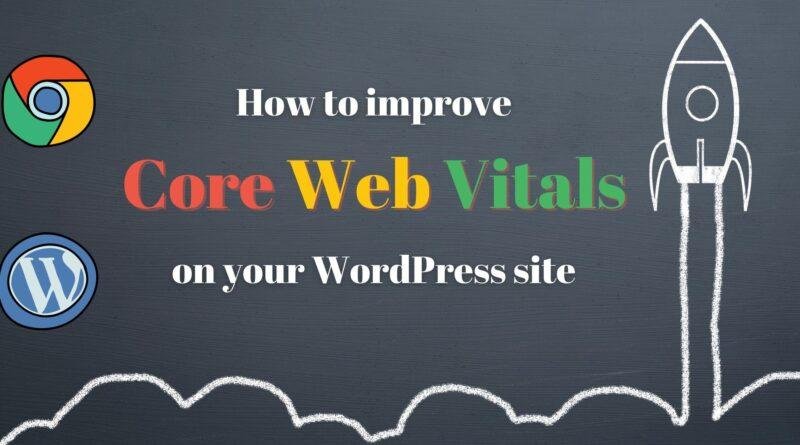Enhancing WordPress Core Web Vitals with Effective Fixes

User experience is paramount in the digital landscape, and website performance plays a crucial role in delivering a seamless browsing experience. WordPress, being one of the most popular content management systems, continuously strives to improve its core web vitals—the essential metrics that measure website performance. In this article, we will explore the significance of WordPress Core Web Vitals and delve into effective fixes that can be implemented to enhance these vital metrics, ultimately improving user experience and search engine rankings.
| Understanding WordPress Core Web Vitals Optimizing Largest Contentful Paint Enhancing First Input DelayImproving Cumulative Layout Shift Leveraging Caching and Compression Techniques |
Understanding WordPress Core Web Vitals
WordPress Core Web Vitals are a set of metrics that measure the loading speed, interactivity, and visual stability of web pages. These metrics include Largest Contentful Paint (LCP), which measures the time it takes for the main content of a page to load, First Input Delay (FID), which assesses the responsiveness of a page to user interactions, and Cumulative Layout Shift (CLS), which measures the visual stability of a page during loading. Google considers these metrics when evaluating website performance and determining search engine rankings.
Optimizing Largest Contentful Paint
Largest Contentful Paint (LCP) is crucial for providing a fast-loading user experience. To optimise LCP, several fixes can be implemented. Firstly, optimising image sizes and formats can significantly improve loading times. Compressing images and using modern image formats, such as WebP, can reduce file sizes without sacrificing image quality. Additionally, leveraging browser caching, minimising CSS and JavaScript files, and optimising server response times can contribute to faster LCP. Implementing a content delivery network (CDN) can also distribute website content across multiple servers globally, reducing latency and improving LCP.
Enhancing First Input Delay
First Input Delay (FID) measures the time it takes for a page to respond to user interactions. To enhance FID, optimizing JavaScript is crucial. Minifying and compressing JavaScript files, removing unnecessary scripts, and deferring non-critical JavaScript can significantly improve FID. Additionally, ensuring efficient handling of user inputs and utilizing web workers to offload JavaScript tasks can also contribute to a smoother and more responsive user experience. Asynchronous loading of JavaScript resources can prevent rendering delays and enhance FID.
Improving Cumulative Layout Shift
Cumulative Layout Shift (CLS) refers to unexpected layout shifts that occur during the loading process, potentially disrupting user interactions. To improve CLS, ensuring proper image and video element dimensions can prevent sudden layout shifts. By specifying width and height attributes for images and videos, the browser can reserve the required space, preventing layout adjustments. Avoiding dynamically injected content above existing elements, using CSS animations with pre-defined space allocations, and loading fonts asynchronously can also contribute to a more stable visual experience and reduce CLS.
Leveraging Caching and Compression Techniques
In addition to specific fixes for Core Web Vitals, leveraging caching and compression techniques can enhance overall website performance. Implementing browser caching allows browsers to store static resources, reducing subsequent page load times. Gzip compression can significantly reduce file sizes, improving overall loading speed. Additionally, utilising a content delivery network(CDN) can distribute website content to servers closer to users, reducing latency and improving performance.
Conclusion
Optimizing WordPress core web vitals is crucial for delivering an exceptional user experience and improving search engine rankings. By implementing effective fixes, such as optimizing Largest Contentful Paint (LCP), enhancing First Input Delay (FID), and improving Cumulative Layout Shift (CLS), website owners can significantly enhance website performance.



